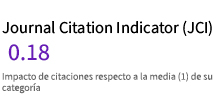Los científicos del cine
DOI:
https://doi.org/10.24310/Fotocinema.2015.v0i11.6083Abstract
La ciencia ha estado presente en el hecho cinematográfico desde sus orígenes, ya como impulsora de la invención misma del cinematógrafo en el ocaso del siglo XIX, ya como promotora del continuo desarrollo técnico que los soportes audiovisuales han ido experimentando y garante de la calidad de la imagen y el sonido, a la vez que elemento propiciador de la reciente apertura del cine hacia la digitalización. En este artículo nos proponemos hacer un breve recorrido por los insignos científicos que han sido protagonistas de la historia del medio en un contexto amplio, desde aquellos primeros inventores y pioneros de los efectos especiales y el trucaje hasta los crudos estereotipos sociológicos que el ámbito audiovisual nos ha ofrecido durante décadas, deteniéndonos a analizar el rol propagandístico o admonitorio que la imagen en movimiento ha desempeñado a la hora de reflejar las bienandanzas o adversidades que el progreso tecno-científico puede llegar a acarrear.
Abstract:
It is an undisputed fact that scientific discovery has been notably present in cinema since its early origins, either as a precursor of the Cinématographe's invention in the twilight of the nineteenth century or even as a tool intended for the technical improvement of the audiovisual aids and the progressive quality of image and sound, as well as a driving force in the opening-up to modern digitalization nowadays. Our aim in this article is to have a short tour around the most prominent scientists that have led the history of film in a wide sense, from the early inventors and the pioneers of special effects and trick photography to the on-screen sociologically stereotypes that audiovisual means have provided for decades. Finally, we also discuss the advertising or warning role that motion pictures have carried out to mainly reflect the prosperities and adversities that techno-scientific progress may entail.
Palabras clave:
Innovación tecnológica; cinematógrafo; documental científico; cine de animación; estereotipos; biopic.
Keywords:
Technological Innovation; Cinématographe; Scientific Documentary; Animated Films; Stereotypes; Biopic.
Downloads
Metrics
Publication Facts
Reviewer profiles N/A
Author statements
Indexed in
-
—
- Academic society
- N/A
- Publisher
- Universidad de Málaga
Downloads
Published
How to Cite
Issue
Section
License
All contents published in Fotocinema Revista científica de cine y fotografía are protected under the Creative Commons Attribution-NonCommercial-ShareAlike 4.0 International (CC BY-NC-SA 4.0) license. All about this license is available in the following link: <http://creativecommons.org/licenses/by-nc-sa/4.0>
Users can copy, use, redistribute, share and exhibit publicly as long as:
- The original source and authorship of the material are cited (Journal, Publisher and URL of the work).
- It is not used for comercial purposes.
- The existence of the license and its especifications are mentioned.
There are two sets of authors’ rights: moral and property rights. Moral rights are perpetual prerogatives, unrenounceable, not-transferable, unalienable, imprescriptible and inembargable. According to authors’ rights legislation, Fotocinema. Revista científica de cine y fotografía recognizes and respects authors moral rights, as well as the ownership of property rights, which will be transferred to University of Malaga in open access. The property rights are referred to the benefits that are gained by the use or the dissemination of works. Fotocinema. Revista científica de cine y fotografía is published in an open access form and it is exclusively licenced by any means for doing or authorising distribution, dissemination, reproduction, , adaptation, translation or arrangement of works.
Authors are responsable for obtaining the necessary permission to use copyrighted images.














13.png)



